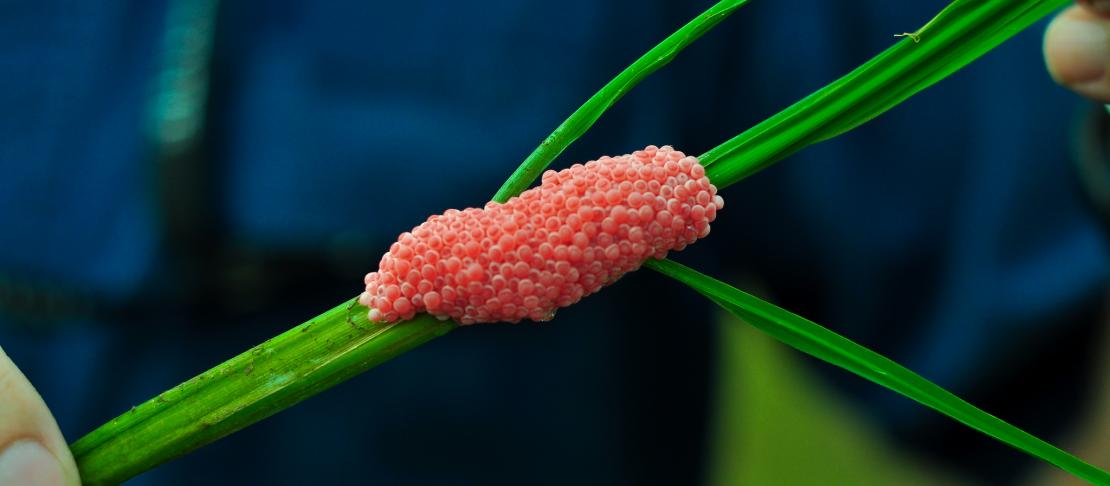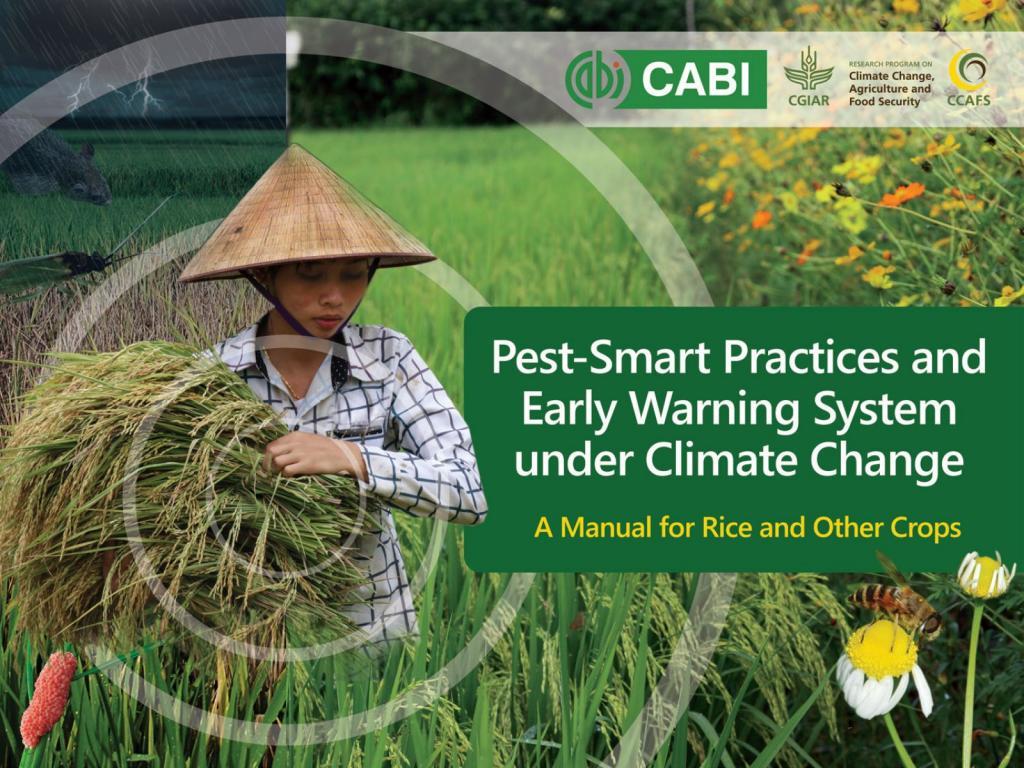“Outsmarting” pests and diseases on farms

Pests and diseases are now more difficult to control due to climate change. The key to addressing this issue is to apply pest-smart interventions on farms.
Pest-smart interventions have been packaged into a user-friendly manual by the Centre for Agriculture and Biosciences International Southeast Asia (CABI) and the CGIAR Research Program on Climate Change, Agriculture and Food Security in Southeast Asia (CCAFS SEA). The manual targets extension workers and farmers but can also be used by large audiences aiming to address pest and disease (P&D) issues under new climate realities.
Detect, Prepare, Protect
Farmers can use tools such as light traps, pheromone traps, and sticky traps to spot any looming pest outbreaks. It is recommended that they conduct this kind of scouting activity at least twice a week. In addition to this early detection, farmers can further reduce the incidence of pests, as well as diseases, through crop rotations. For instance, they can plant root crops in the first cropping season, followed by grains or cereals, then legumes in the last cropping season. With crop rotations, the available soil nutrients are utilized. The leguminous crops, specifically, improve soil fertility, which will prepare the soil for another round of cropping season.
Diseases such as rice blast, bacterial blight, and sheath blight can be prevented by adjusting planting time and crop density. Farmers should also examine their plants for leaf lesions, ensure good drainage in their fields, control weeds, and widen plant spacing. If they have access to them, using climate-resistant varieties of plants should reduce the need to buy and use pesticides on their farms. This will increase the take-home income of farmers, as it cuts down on costs.
 Read the manual: Pest-Smart Practices and Early Warning System under Climate Change (A Manual for Rice and Other Crops) |
Going “natural”
Instead of applying pesticides, farmers can utilize certain insects, including spiders, to prey on pests. For instance, a Lynx spider can eat two to three leaf folders per day; damselflies and dragonflies prey on leafhoppers, stem borers, and leaf folders; and ground beetles prey on planthopper nymphs. These species can easily be attracted onto farms through ecological engineering.
Ecological engineering involves planting flowers around rice bunds, fostering biodiversity on farms and attracting beneficial species that prey on pests. This reduces the need for pesticides, which in turn helps farmers save money and protect their crops. Biopesticides such as Beauvaria and Metarhizium and bacteria such as Bacillus thuringiensis can also control various kinds of rice pests.
With the impacts of climate change breeding more harmful pests and diseases, farmers must apply pest-smart technologies and practices that will not only protect their crops, but also help them reduce their costs. Monitoring their farms regularly in order to spot impending pest outbreaks, and complementing this monitoring with ecologically-sound farm management (which utilizes controlled irrigation, resistant varieties, and beneficial species), is farmers' best bet.
Be a pest-smart farmer now by downloading the publication: Costa A, Thanarajoo SS, Sivapragasam A. 2018. Pest-Smart Practices and Early Warning System under Climate Change (A Manual for Rice and Other Crops). Wageningen, the Netherlands: CGIAR Research Program on Climate Change, Agriculture and Food Security (CCAFS).
Renz Louie Celeridad is the Junior Communications Specialist for the World Agroforestry Centre Philippines. He also works as a Communications Consultant for CCAFS SEA.



